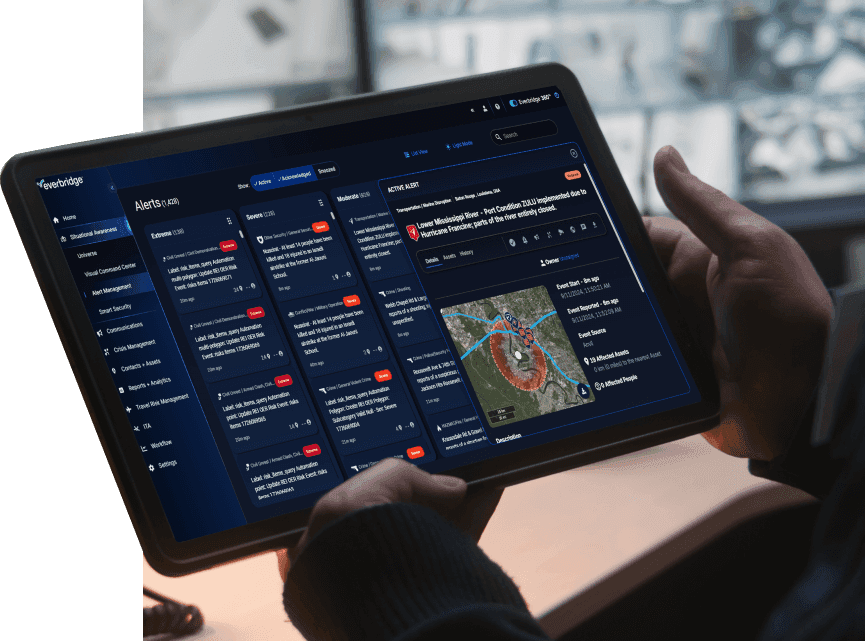Operational resilience is the ability of an organization to deliver critical business operations, even during disruptions. This concept, as defined by the European Banking Authority, emphasizes ensuring that essential services continue to function amid challenges such as cyber-attacks, natural disasters, regulatory changes, or supply chain disruptions.
Unlike organizational resilience, which focuses on the broader capacity of an organization to adapt and survive, operational resilience focuses on maintaining critical operations. Its growing importance stems from the increasingly interconnected and complex environments businesses operate in today.
Why operational resilience matters
Disruption is an unavoidable reality in today’s business environment. With increasingly sophisticated cyber threats, geopolitical uncertainties, natural disasters and a hyperconnected digital world, the question is no longer if a critical incident will occur, but when. The ability to anticipate and mitigate such incidents can mean the difference between navigating the storm successfully or facing significant losses.
Beyond financial impacts, failing to maintain operations during a crisis can severely harm your reputation and strain relationships with customers and vendors. In some industries, it could even lead to regulatory penalties. Being prepared is not just an advantage—it’s a necessity.
For industries such as Financial Services, Healthcare, Energy and Utilities, Telecom, and Manufacturing, disruptions can have far-reaching effects. Operational resilience ensures:
- Business continuity even under adverse circumstances.
- Protection of critical services for customers and stakeholders.
- Regulatory compliance, reducing the risk of penalties.
- Enhanced organizational reputation, fostering trust and loyalty.
Ultimately, operational resilience sets businesses up not only to survive but to thrive, ensuring they remain competitive no matter the challenges.
Key elements of operational resilience
Building operational resilience requires focusing on three critical areas: people, processes, and technology.
People
- Cross-functional collaboration: Teams from IT, security, leadership, compliance, and operations must work together to identify potential vulnerabilities and develop strategies.
- Leadership is key: Leaders must foster a culture of resilience that encourages proactive problem-solving and organizational readiness.
Processes
- Protect critical business functions: Identify which processes are vital to operations and design safeguards to keep them running.
- Flexibility is critical: Operational workflows must be adaptable to accommodate unforeseen challenges or evolving risks.
Technology & systems
- Robust IT infrastructure is essential: This includes cybersecurity measures, disaster recovery plans, and reliable data backup systems.
- Modern tools pave the way for real-time insights: Technologies like artificial intelligence can help monitor vulnerabilities and predict potential disruptions.
How to build operational resilience
Implementing operational resilience starts with actionable steps that organizations can take today.
Assessing operational risks & vulnerabilities
- Conduct comprehensive risk assessments to identify potential threats.
- Map out dependencies across operations, including third-party vendors and supply chains.
Establishing a response framework
- Develop incident response plans that outline clear steps to handle unforeseen disruptions.
- Regularly test frameworks through drills and simulations, ensuring readiness during high-stress events.
Embedding resilience into strategic decisions
- Align operational resilience with business goals, risk management strategies, and business continuity planning.
- Make continuous adaptation a priority, recognizing that risks and operational landscapes constantly evolve.
Continuous improvement
- Track performance over time using KPIs specific to resilience and refine strategies accordingly.
- Stay informed about emerging risks and industry changes that may require new approaches.
Operational Resilience vs Business Continuity
While operational resilience and business continuity often overlap, they are distinct approaches.
Operational resilience takes a proactive and broader approach. It considers not just internal operations but external dependencies, regulatory requirements (like DORA in financial services), and long-term risks.
Business continuity, on the other hand, focuses on reactive measures, such as predefined plans to recover quickly after disruptions. Its priority is minimizing downtime and restoring operations.
Both disciplines depend on cross-functional collaboration, emphasize the identification of critical business functions, and require regular testing. However, operational resilience builds on business continuity by ensuring adaptability to future challenges.
Future of operational resilience
The future of operational resilience is rooted in proactive planning and continuous improvement. To remain competitive, businesses must anticipate risks and integrate resilience into their everyday strategies.
This means fostering collaboration across departments, leveraging advanced technologies, and aligning resilience with organizational goals. By combining operational resilience with business continuity, organizations position themselves to withstand turbulent conditions and meet future challenges head-on.
Now is the time to act. Continuity experts should assess their organization’s operational resilience framework, identify gaps, and take strategic steps to strengthen it.
For more ways to operationalize resilience, visit our resource on understanding DORA and explore our Operational Resilience Solutions.
Operational resilience isn’t just a priority—it’s a business imperative. Take the next step to protect your critical operations today.


